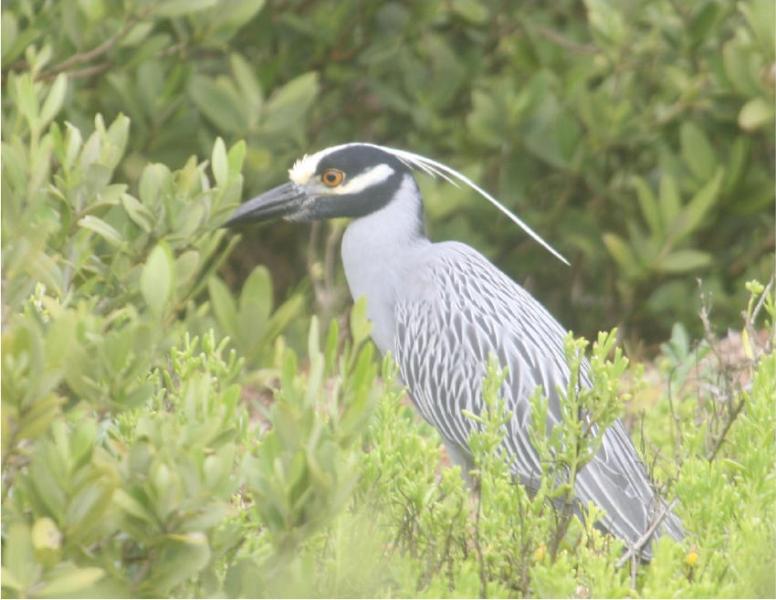A Bright Eye and Plume amid the Greenery
By Dave Hanks
I see it! It’s so quiet and creeping so stealthily through the shoreline vegetation that it could easily go undetected. The bold red eye and long white plume are what stands out. I wonder why its name has yellow in it, as I see none of that color. However, during the breeding season the white of the head is tinged with yellow. only to become white again. This small heron (2 feet tall) is impressive irregardless of its name.
The YELLOW-CROWNED NIGHT HERON lives in wooded swamps, fresh and salt water marshes, and thickets. It eats a diet of aquatic organisms, which occasionally includes small turtles. Its stomach secretes an acid that will dissolve the shells. Unlike other night herons, it is active both night and day. Also, unlike other herons, it prefers a solitary life style – both in its everyday activity and nesting behavior (others nest in rookeries).
Obviously it has been hunted, as its meat is reported to be excellent eating.
When wounded it will defend itself vigorously with its claws and can inflict severe scratches. It is also quick to get out of the reach of the attacker. The Yellow-Crowned Night Heron is sensitive to environmental problems like oil slicks, because it hunts shorelines and tidal marshes when the tide is out.
We have its relatives: the Black-Crowned Night Heron and the American Bittern, but it is exciting to see a special bird like this one - especially because they are not available in our area!
(Nyctanassa violacea)
|
